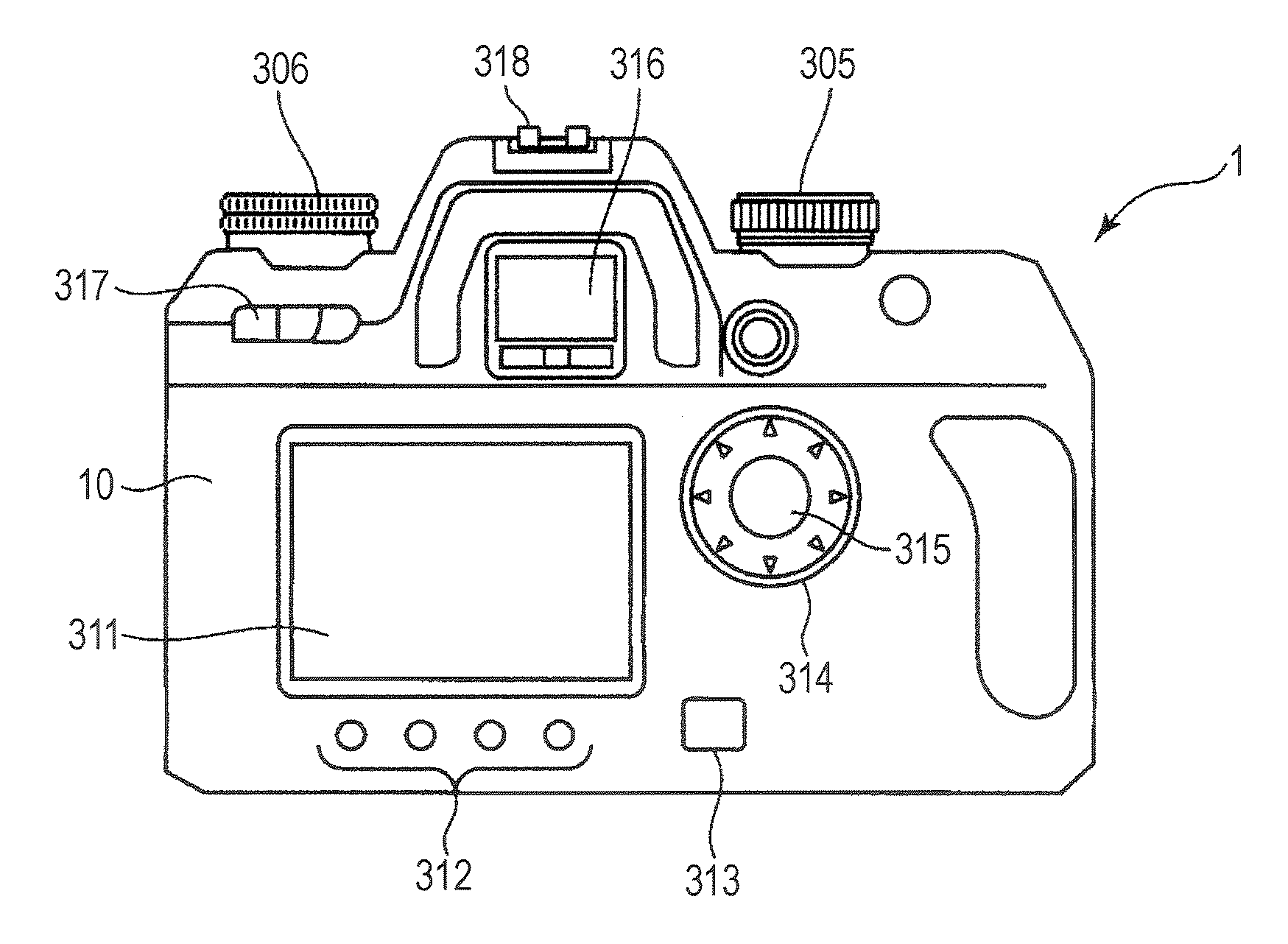Imaging device
a technology of imaging device and shake correction, which is applied in the field of imaging apparatus, can solve the problems of affecting vibration, affecting so as to improve the accuracy of shake correction
- Summary
- Abstract
- Description
- Claims
- Application Information
AI Technical Summary
Benefits of technology
Problems solved by technology
Method used
Image
Examples
Embodiment Construction
[0049]An embodiment of the present invention will now be described with reference to the drawings.
[0050](Description of Exterior Construction of Camera)
[0051]FIGS. 1 and 2 are views showing the exterior structure of a digital camera 1 (imaging apparatus) according to an embodiment of the present invention. FIG. 1 is a front exterior view of the digital camera 1, and FIG. 2 is a rear exterior view of the digital camera 1. As shown in FIG. 1, the digital camera 1 is a single-lens reflex type digital still camera including a camera body 10, and a taking lens 2 (interchangeable lens) detachably (interchangeably) mounted at substantially the center of the front surface of the camera body 10.
[0052]In FIG. 1, on the front surface side of the camera body 10, there are provided a mount section 301 which is located substantially at the center of the front surface and on which the taking lens 2 is mounted, a lens exchange button 302 arranged to the right of the mount section 301, a grip sectio...
PUM
 Login to View More
Login to View More Abstract
Description
Claims
Application Information
 Login to View More
Login to View More - R&D
- Intellectual Property
- Life Sciences
- Materials
- Tech Scout
- Unparalleled Data Quality
- Higher Quality Content
- 60% Fewer Hallucinations
Browse by: Latest US Patents, China's latest patents, Technical Efficacy Thesaurus, Application Domain, Technology Topic, Popular Technical Reports.
© 2025 PatSnap. All rights reserved.Legal|Privacy policy|Modern Slavery Act Transparency Statement|Sitemap|About US| Contact US: help@patsnap.com



